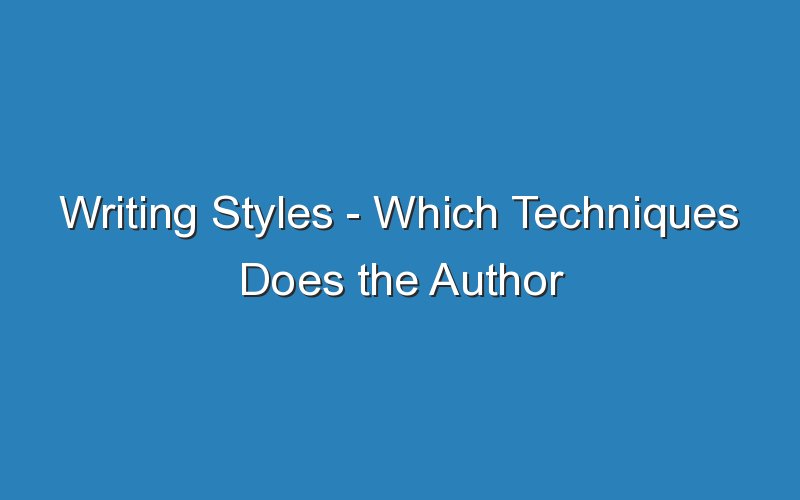Using a simile to create a strong connection between two objects is a good way to draw your reader into a story. Just as in poetry, you need a connecting word to make a simile work. Robert Burns’ famous poem, “Little Men,” contains a famous simile about love. In his story, Gregor wakes up to find that his love is a giant insect. This intriguing idea will hook your readers and keep them turning the pages.
Another great writing technique is foreshadowing, which many authors use to draw readers into a story. In this type of story, the author gives a hint about a certain character or situation. The hint may be subtle or overt. In JRR Tolkien’s novel “The Hobbit,” for example, the reader is warned not to leave the path, as Gandalf is about to appear.
The third technique is to raise questions in the story. In this style, the author uses hints to draw the reader into the story. For example, JRR Tolkien uses clear foreshadowing in his novel The Hobbit, when he says to Bilbo Baggins not to leave the path. This technique makes the reader curious and anticipates what will happen next. In some cases, the writer may also hide important information so that the reader has to guess at the answer.
Lastly, the writer can leave the reader with questions. Foreshadowing is an effective writing technique that many authors use. In The Hobbit, for example, the author uses foreshadowing to create suspense. In this example, Gandalf warns Bilbo Baggins not to walk in the path, foreshadowing his arrival. But in this case, the hint is subtle.
The third technique is foreshadowing. It is a technique that has been used for centuries by great authors. Foreshadowing is an effective way to entice the reader to read further. By setting the tone for the story, the writer creates an environment that makes them want to find out more. It also allows the reader to ask questions, which further compel the reader to stay reading.
As with any writing style, the author must take the audience into consideration. The audience should be the primary focus of the piece. If the reader is interested in the subject, the writer should include information that will be of interest to the audience. A believable story will make the reader feel emotionally invested in the story. If the reader doesn’t care about the characters, they won’t be engaged. In a book, foreshadowing is the technique that is used to create a sense of mystery and intrigue.
Foreshadowing is another common technique used by writers to engage the reader. The writer may choose to hint to the reader in a subtle or explicit way. For instance, JRR Tolkien used clear foreshadowing in The Hobbit by stating, “When you cross this path, you’ll encounter darkness. You will not be able to see the light, which is why the author uses this technique.
Foreshadowing is a technique used by many great authors. It is a way to set up a scenario that a reader will want to know about. A clear hint will keep the reader intrigued and enticed. The author can also hide information in a subtle way. This is a great way to keep the readers’ attention. But beware of too much foreshadowing.
Foreshadowing is a technique used by many great writers. It creates a sense of tension and anticipation in the reader. The writer may use it to create suspense and intrigue. Toeshadowing is the technique used by the authors in The Hobbit. It uses hints and clues to hook the readers’ attention. Foreshadowing can be subtle or very obvious. Whether a writer is a newbie or an expert in the field, he will always use this technique to get their readers’ attention.

